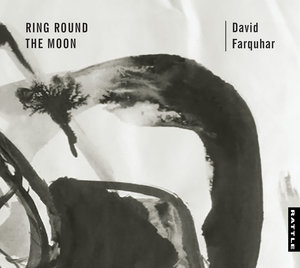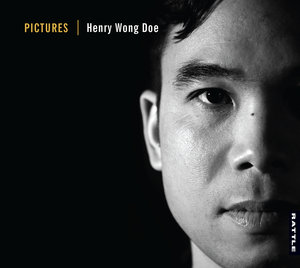New Zealand Festival 2018
King’s Singers (Patrick Dunachie and Timothy Wayne-Wright, counter-tenors; Julian Gregory, tenor; Christopher Bruerton and Christopher Gabbitas, baritones; Jonathan Howard, bass)
Voices New Zealand Chamber Choir conducted by Karen Grylls
Henry Ley: The Prayer of King Henry VI
Bob Chilcott: ‘We Are’; ‘High Flight’
Ludwig Senfl: Das G’läut zu Speyer
Orlandus Lassus: Dessus le marché d’Arras
Eric Whitacre: ‘The Stolen Child’
Saint-Saënes: Romance du soir
Schubert: Die Nacht
Leonie Holmes: ‘This Watershed Time’
Trad. (arr. Goff Richards): Lamorna
Trad. (arr. Bob Chilcott: ‘I Bought me a Cat’
Nico Muhly: ‘To Stand in this House’
The Party Bag: classic favourites and new works in close-harmony
Michael Fowler Centre
Saturday, 10 March 2018, 7:30 pm
Surprisingly perhaps, The King’s Singers were full of praise for the Michael Fowler Centre as a venue for their type of singing. They demonstrated what true projection is, both in speaking and singing. The breadth of their repertoire was astonishing, the clarity, precision and warmth of their utterances, breathtaking.
This concert was part of a 50th anniversary tour; it was surprising to learn that it is 30 years since they visited Wellington, though they have visited other New Zealand cities much more recently. I certainly remember their visit here in April 1972. While the counter-tenors this time were sweeter and fuller in tone, I thought the baritones and bass did not quite have the fullness or warmth of tone of the original King’s Singers equivalents, one of whom I later had the privilege of singing under in the Orpheus Choir, for whom he conducted a Mozart concert in 1991.
Voices New Zealand Chamber Choir certainly lost nothing in comparison with the British (well, one is a New Zealander) imports. Like The King’s Singers, they sang most of the music with scores in front of them (paper, not laptops like TKS), but both ensembles sang some of the repertoire from memory.
The Ley was the opening item. Henry Ley (1887-1962) wrote a setting of an ancient prayer was written for the singers’ alma mater, King’s College, Cambridge The prayer of King Henry VI, the college’s founder, was written in 1441. This, and most of the programme, was sung with the audience in darkness, as indeed were also those parts of the stage not in use. This was somewhat irritating if one wished to read the programme – not that it contained much detail about the music performed. However, members of TKS, mainly bass Jonathan Howard, introduced items verbally, often in a lightly humorous fashion.
The first Bob Chilcott item followed, the two items being grouped under the heading ‘The Family’, i.e. the King’s family; composer Chilcott is a former member the King’s Singers. Warm, clear consonants were a feature of the singing; these contribute much to the clarity of the words, which were by poet Maya Angelou. ‘Voices’ sang in this item, which was commissioned for the KS 50th anniversary. The programme blurb said ‘Celebrating their 50th anniversary in 2018, The King’s Singers are engaging the finest choirs across the globe to chart their journey through their music… This year also marks the 20th anniversary of Voices New Zealand Chamber Choir’.
The next sequence, sung by TKS alone, after some welcoming and descriptive remarks, was headed ‘The Joy of the Renaissance’, and included Das G’läut zu Speyer by Ludwig Senfl (ca. 1486-1543). The short piece was to do with the ringing of church bells, and was most effective, one voice to a part. Lassus, or di Lasso if you prefer, set a suggestive song about a soldier and a young lady in the French town of Arras. The King’s Singers invested it with liveliness.
Contemporary American composer Eric Whitacre is a prolific writer of choral music. Under the heading ‘The Philosopher’ was the song ‘The Stolen Child’; here Voices New Zealand joined in again, conducted by Karen Grylls. It was a setting of a poem by Irish poet W.B. Yeats. This had been composed for the 40th anniversary of TKS. The spooky words evoked spooky music This was a longer piece than many of Whitacre’s choral compositions. Quite a complex work, it employed evocative harmonies, and particularly beautiful counter-tenor tone.
‘The Beauty of the Romantic Era’ was represented by Saint-Saëns and Schubert; TKS on their own. The former’s Romance du soir It goes without saying that both French and German were impeccably pronounced. These were part songs for four singers. Clarity plus, superb phrasing, and wonderful tone were features. Schubert’s Die Nacht was particularly lovely.
‘The Force of Nature’ was the heading given for the commissioned work from Auckland composer Leonie Holmes: ‘This Watershed Time’, which received its world premiere. Composer and poet were both present; the latter’s name was not printed in the programme – she was Anne Powell of New Plymouth. ‘Voices’ was also involved in this piece. To start with, the latter’s contribution was mainly humming. There were numerous beautiful solos from TKS, including difficult intervals – lots of seconds. Dynamic variation added interest.
There were flowing sequences, appropriately sounding like the water of the title. Sustained low notes like drones were another feature. Often there was a mesmerising effect. All was sung with confidence and accuracy. I had the impression that the audience did not take too well to this music – there was much more coughing in this part of the performance than elsewhere.
The hall was briefly illuminated for the composer to take her bow, before darkness again took hold for ‘The Romance of Folksong’ section. It consisted of two traditional items, the first being the hilarious ‘Lamorna’ and the second a thoroughly delightful arrangement of the American song ‘I bought me a cat’. Both were jolly and presented with style and humour. The harmony in these arrangements was impressive and enjoyable; singing intervals of a second to give more accurately the sound of duck, goose, pig etc. would not be easy, but was passed off with nonchalance. The English words in this latter piece were clear and exquisitely enunciated.
The final piece before the interval was ‘High Flight’ by Bob Chilcott, performed along with ‘Voices’. It was another work written for the TKS 40th anniversary, and was originally performed with the King’s College chapel choir. The poem by John Gillespie Magee, an Anglo-American pilot in the Canadian Air Force, was written only a few months before he died early in World War II. I have sung these words in a setting by John Ritchie, part of his composition ‘Wings of the Morning’. Chilcott’s setting could not have been more different. Where the Ritchie was contemplative and soaring, this was fast, and incorporated a great range of the aural compass.
‘The Visionary’ was the title above American composer Nico Muhly’s ‘To Stand in this House’, a commission for this 50th anniversary. The piece started with an ancient prayer – the same one that opened the evening’s programme. Other authors with King’s College connections represented in the four-movement piece were Salman Rushdie, and English contemporary author Zadie Smith. ‘Voices’ sang in this work also, though at first their participation was minor.
Part of the second movement involved selective wavering of some of the voices as a potent accompaniment. Words were clear, for the most part. The third movement I found a bit dull. My other comments I cannot read because of the problems of writing in the dark! The final movement engaged the choir less. I found the piece to have excellent word setting, musically, but it was hard to pick up much of them. This was a highly skilled work, and pleasant to listen to, but not easily absorbed in one hearing.
The final bracket, of more popular items, was sung by TKS alone, without scores. ‘Ob la di, ob la da’ is a 1968 Beatles song. The singers embroidered it with vocal sound effects, at which they are highly skilled. It provided amusement and enjoyment. Next was ‘I’ve got the world on a string’, a popular 1932 jazz song composed by Harold Arlen, with lyrics written by Ted Koehler. Wonderful close harmony singing was to the fore.
Then a change of style, to a lovely arrangement of ‘My love is like a red, red rose’. The Robert Burns poem was set by a number of his contemporaries, but the tune we know today was paired with it by Robert Archibald Smith, using the tune of ‘Low Down in the Broom’ in his Scottish Minstrel book in 1821. The close harmony here made this touching song even more moving. Solos in the verses added to the effect. Here, it was remarkable to note the breath control of the singers. Despite the ‘Party Bag’ the overall tone of the concert was serious. Gone were the frilly, coloured shirts worn for the lighter second half of the programme by the 1972 King’s Singers!
Aspects of the singing throughout were the perfect vowel matching, the precision timing with no obvious conducting happening (in the case of TKS). It goes without saying that intonation was spot-on. Beautiful textures, suited to the style of particular pieces were a feature. ‘Mellifluous’ is too weak a word to describe the sounds of both ensembles. For there is more than one sound – a mark of good singing, in my view. The sound produced for the first item, by Henry Ley, was very different from the sound heard in the Billy Joel item – but both were beautiful.
The last item was a Dave Dobbyn number, which the audience knew: ‘Slice of heaven’. Finally the encore, from The King’s Singers and Voices New Zealand: a Billy Joel song, ‘And so it goes’. The singing was gorgeous from the sextet, with Voices going ‘ooh-waah’ in the background in this lovely arrangement. So ended a wonderful concert, in which vocal music was demonstrated at its highest level, all without instrumental accompaniment.


